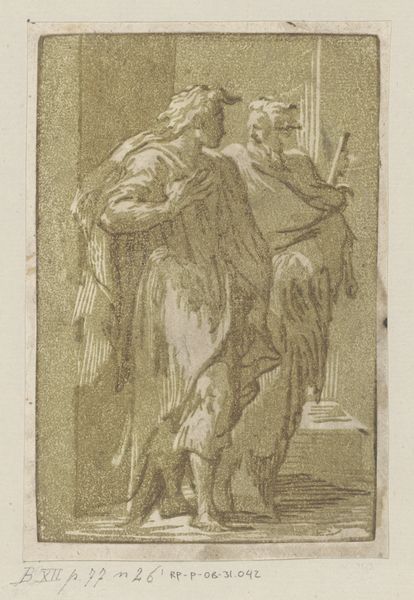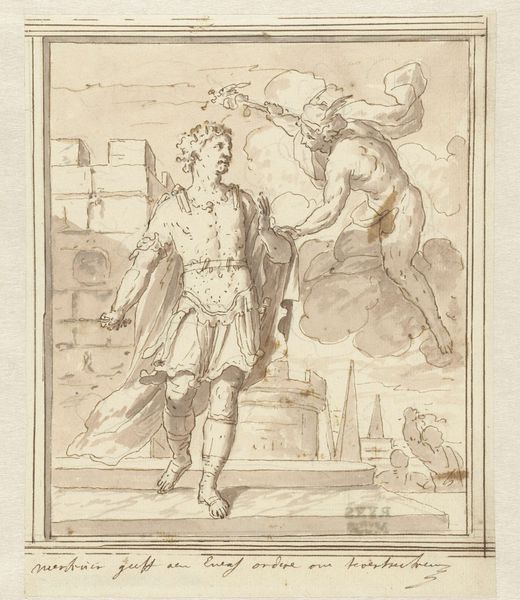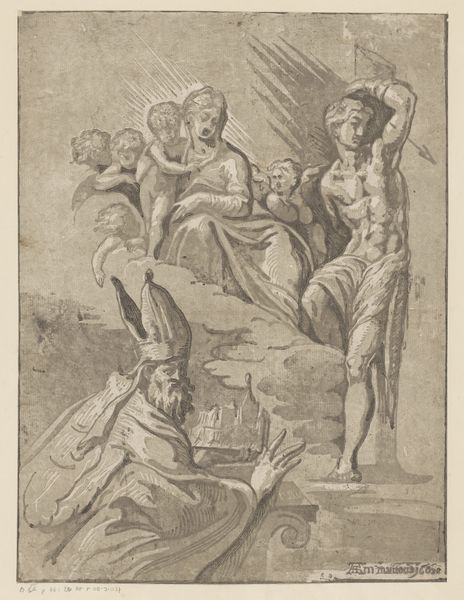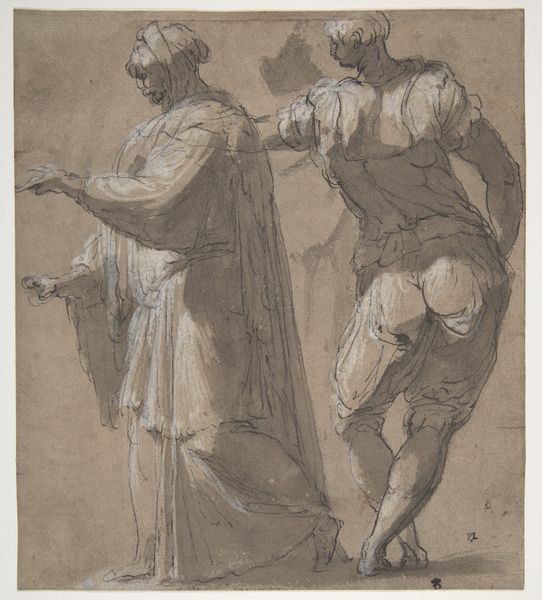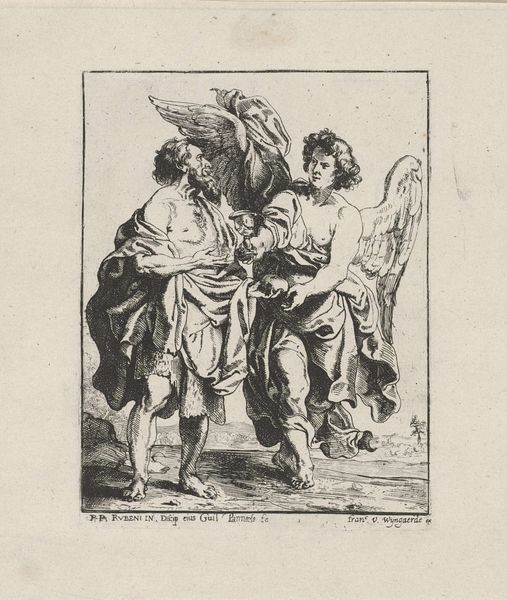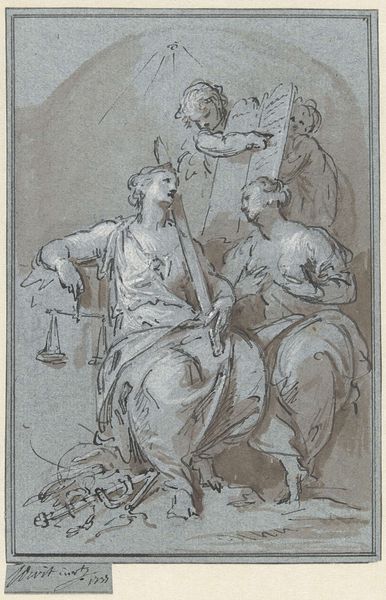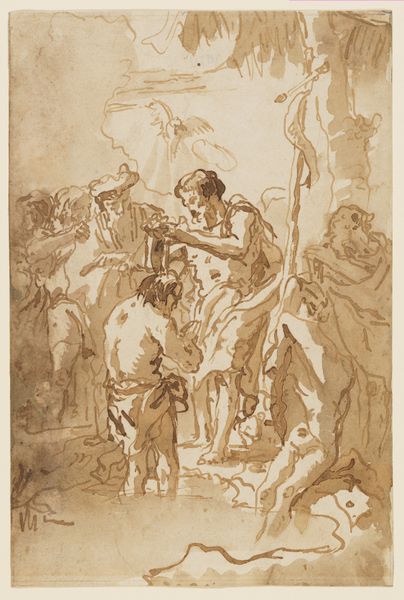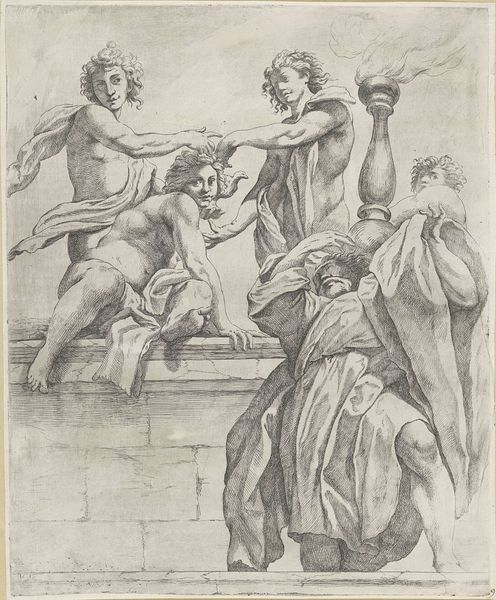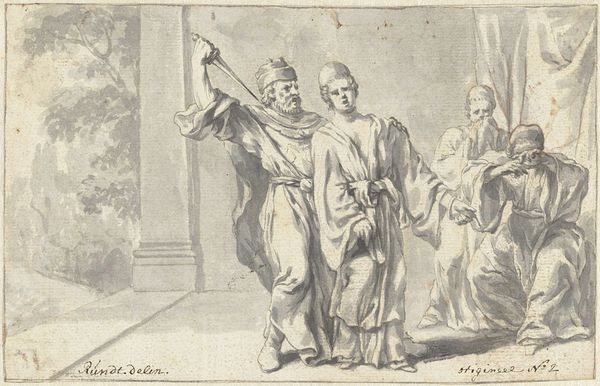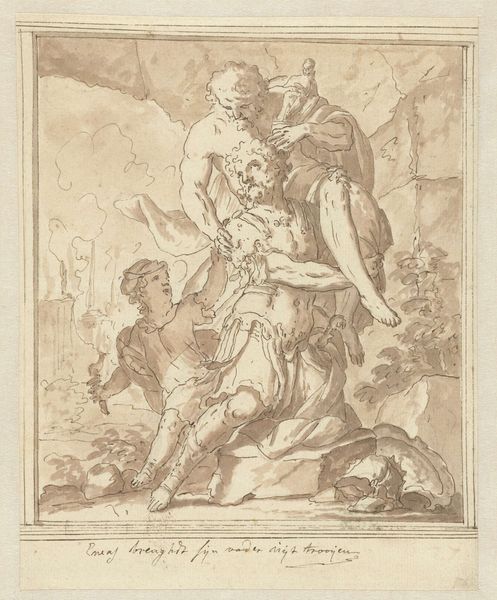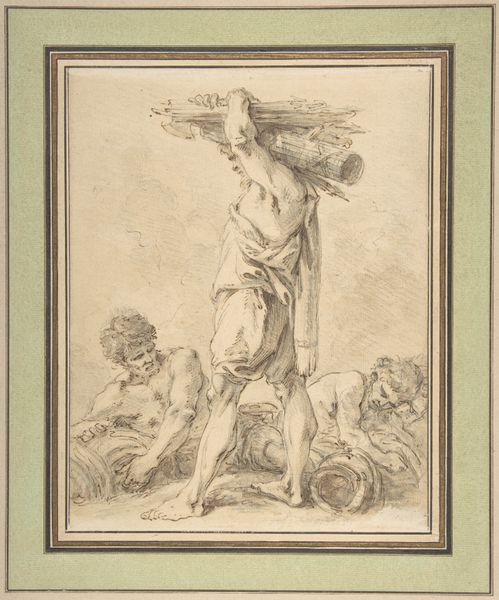
drawing, paper, watercolor, ink
#
drawing
#
ink painting
#
figuration
#
paper
#
11_renaissance
#
watercolor
#
ink
#
history-painting
#
academic-art
#
watercolor
Dimensions: 6 9/16 x 3 7/8 in. (16.7 x 9.9 cm)
Copyright: Public Domain
Curator: Okay, let’s discuss this intriguing drawing, "Antique Subject" from the 17th century, currently housed at the Met. It's rendered in ink and watercolor on paper, depicting a group of figures draped in what appears to be classical attire. Editor: Yes, it immediately strikes me as something preparatory, almost like a study for a larger history painting. What stands out to you about this piece? Curator: Well, consider the very materiality. The artist's choice to use ink and watercolor, relatively inexpensive and easily accessible materials, hints at the economic conditions of artistic production at the time. This wasn't about lavish displays of wealth, but about efficiently conveying ideas. And how was the paper itself manufactured and distributed? The process would certainly impact the overall artistic economy, right? Editor: That's interesting, I hadn't considered the economic implications of the medium itself. I guess I was more focused on what the image seemed to depict. Curator: Right, but it’s also crucial to understand how that depiction comes to us. Was this work created for a wealthy patron's private collection, to then to signify taste and education? The materiality connects so deeply to these questions. Is this rough sketch intended as merely a step to more refined piece or to circulate quickly, and perhaps democratically among artistic circles? Editor: So you’re saying that the materials, in their own way, provide context about how the artist worked, who their audience might have been, and how they saw their role within that economy of art production? Curator: Precisely. Examining those relationships and production factors informs the choices, allowing us to grasp something vital about the art's place in history. Editor: This gives me a lot to think about, how the very fabric of a piece speaks volumes about its purpose and its maker’s intention. Curator: Absolutely! We learn about labor, networks, economies and artmaking, if we can look critically and holistically, beyond just a narrative approach.
Comments
No comments
Be the first to comment and join the conversation on the ultimate creative platform.
